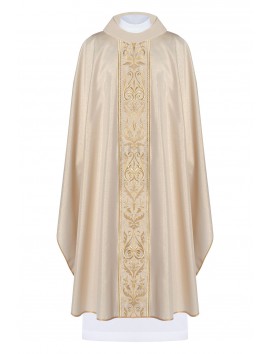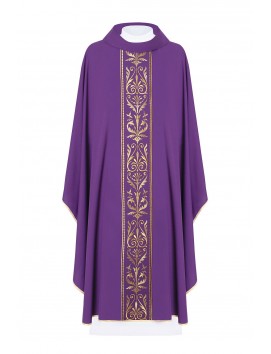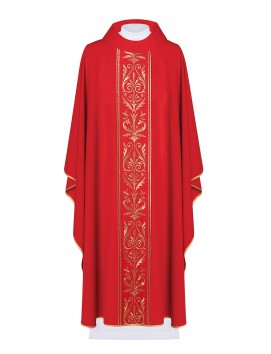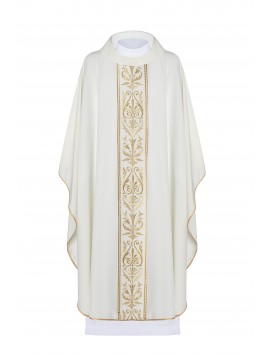Yes, priests often wear albs as a part of their liturgical vestments. The alb is a long, white garment that is worn over street clothes and under other liturgical vestments, such as the stole and chasuble. It is a symbol of purity and represents the white garment worn by Christ at his baptism. The alb is typically made of lightweight, breathable fabric, such as linen, cotton, or polyester, and is designed to be comfortable and easy to move in during the celebration of Mass and other liturgical services.
The alb is usually tied around the waist with a cincture, which can be made of the same fabric as the alb or a contrasting color. Some albs have decorative elements, such as lace or embroidery, which can vary in design depending on the liturgical season or occasion. Overall, the alb is an important part of a priest's liturgical wardrobe and serves as a symbol of their role as a servant of Christ.
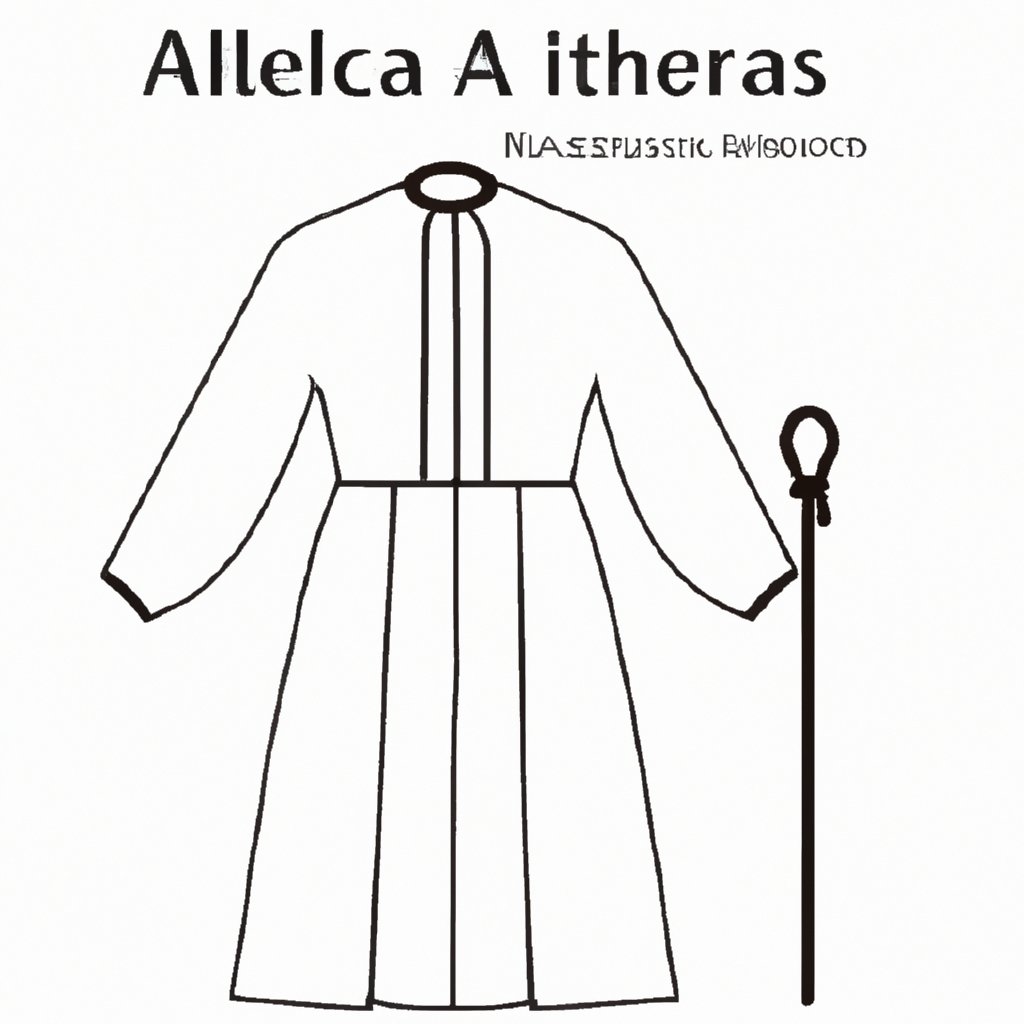
What is a priest’s alb?
A priest's alb is a long, white liturgical garment that is worn over street clothes and under other vestments, such as the stole and chasuble, during the celebration of Mass and other liturgical services. The word "alb" comes from the Latin word "albus," which means white. The alb is a symbol of purity and represents the white garment worn by Christ at his baptism. It is also a symbol of the priest's baptismal promises and his role as a servant of Christ.
The alb is typically made of lightweight, breathable fabric, such as linen, cotton, or polyester, and is designed to be comfortable and easy to move in during the celebration of Mass and other liturgical services. It is usually tied around the waist with a cincture, which can be made of the same fabric as the alb or a contrasting color. Some albs have decorative elements, such as lace or embroidery, which can vary in design depending on the liturgical season or occasion.
What is a white alb?
A white alb is a long, white liturgical garment that is worn by clergy, especially by priests and deacons, during the celebration of Mass and other liturgical services. The word "alb" comes from the Latin word "albus," which means white. The white color of the alb is a symbol of purity and represents the white garment worn by Christ at his baptism. It is also a symbol of the priest's or deacon's baptismal promises and his role as a servant of Christ.
The alb is typically made of lightweight, breathable fabric, such as linen, cotton, or polyester, and is designed to be comfortable and easy to move in during the celebration of Mass and other liturgical services. It is usually tied around the waist with a cincture, which can be made of the same fabric as the alb or a contrasting color.
What does a priest wear under the alb?
Under the alb, a priest usually wears a white undershirt called a "surplice" that covers the neck and the arms. The surplice is a lightweight, loose-fitting garment that is usually made of cotton or linen. It is designed to be comfortable and easy to move in during the celebration of Mass and other liturgical services. The surplice is also a symbol of the priest's humility and purity, and it reminds him of his role as a servant of Christ.
In addition to the surplice, a priest may also wear a white stole around his neck, which is a long, narrow strip of fabric that is typically embroidered or decorated with crosses. The stole is a symbol of the priest's authority to administer the sacraments and to preach the Gospel. Finally, the priest may wear a cincture, which is a long cord or belt that is tied around the waist to secure the alb and surplice in place.
What is the purpose of the alb?
The alb is a long, white liturgical garment that serves several purposes during the celebration of Mass and other liturgical services. Here are some of the main purposes of the alb:
1. Symbol of purity: The white color of the alb symbolizes purity and reminds the priest, deacon, or altar server of his or her baptismal promises to live a life of holiness and purity.
2. Uniformity: The alb serves as a uniform for the clergy and altar servers, helping to create a sense of unity and order during the liturgy.
3. Comfort: The alb is typically made of lightweight, breathable fabric, such as linen or cotton, which allows the wearer to move freely and comfortably during the liturgy.
4. Practicality: The alb covers the clothing of the clergy or altar server, protecting it from stains or damage during the liturgy.
5. Reverence: The wearing of special liturgical garments, including the alb, is a sign of reverence and respect for the sacredness of the liturgy
What is worn over the alb and cassock at the Eucharist?
During the celebration of the Eucharist, a priest or bishop may wear several different liturgical vestments over his alb and cassock. Here are some examples:
1. Stole: A long, narrow strip of cloth worn around the neck, the stole is a symbol of the priest's authority and responsibility to lead and serve the Church. The color of the stole varies according to the liturgical season or occasion.
2. Chasuble: A sleeveless, outer garment worn over the alb and stole, the chasuble is a symbol of the priest's role as a servant of Christ and the Church. It is typically made of a richly decorated fabric and is also color-coded according to the liturgical season or occasion.
3. Dalmatic: Similar to the chasuble, the dalmatic is a sleeveless outer garment worn by deacons over their alb and stole. It is also color-coded according to the liturgical season or occasion.
Who wears an alb in the Catholic Church?
In the Catholic Church, the alb is primarily worn by clergy, including priests, deacons, and bishops, as well as altar servers. The alb is a required vestment for celebrating the sacraments and other liturgical services.
Priests and bishops wear an alb during Mass and other liturgical celebrations, along with other liturgical vestments such as a stole and chasuble (for priests) or a dalmatic and cope (for bishops). Deacons also wear an alb during liturgical celebrations, along with a stole and dalmatic.
Altar servers, who assist during the Mass, also wear an alb, typically in coordination with a colored cassock or surplice. The alb serves as a symbol of purity and uniformity for all who wear it during liturgical celebrations in the Catholic Church.
Why does a priest wear an alb?
The alb is a liturgical vestment that is worn by the priest during Mass and other liturgical celebrations in the Catholic Church. The alb is a long, white garment that covers the priest from neck to feet and is typically made of linen or a similar lightweight fabric. Here are some of the reasons why a priest wears an alb:
1. Symbol of purity: The white color of the alb symbolizes the purity and holiness of Christ, and reminds the priest and the faithful of the need to approach the altar with reverence and humility.
2. Practicality: The alb helps to keep the priest's other vestments clean and neat, as well as provide a barrier between the priest's clothing and the elements of the altar.
3. Historical significance: The alb has been worn by priests since ancient times, and is considered to be one of the oldest liturgical vestments in the Catholic Church.

